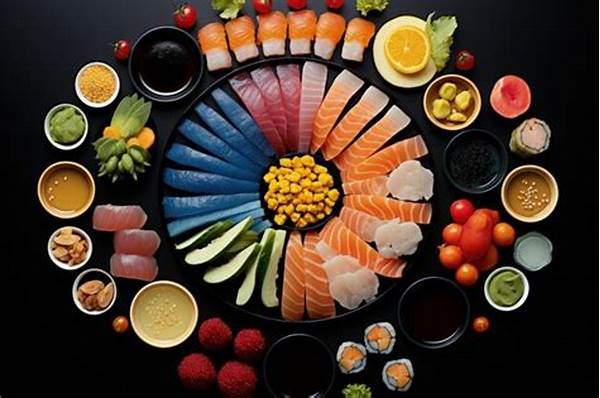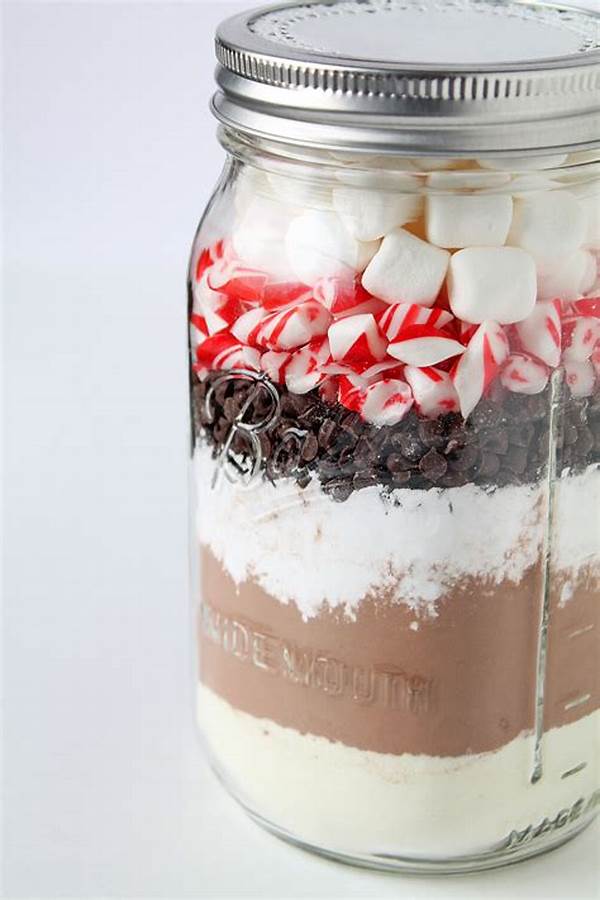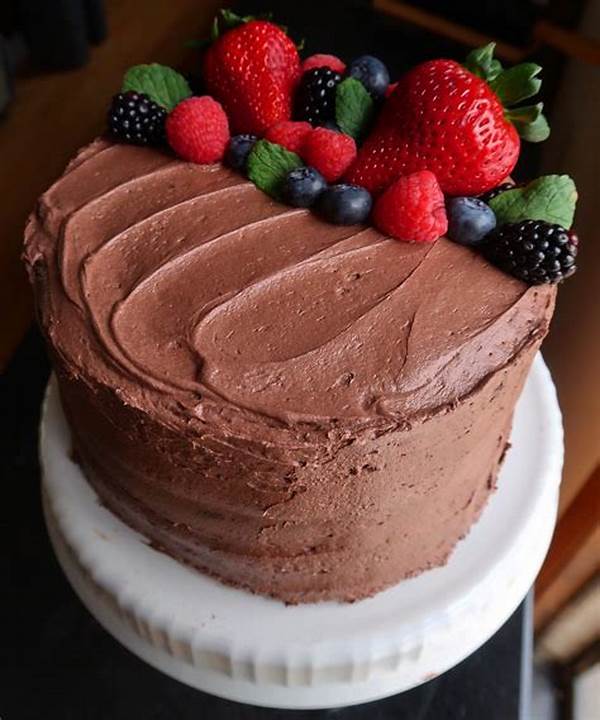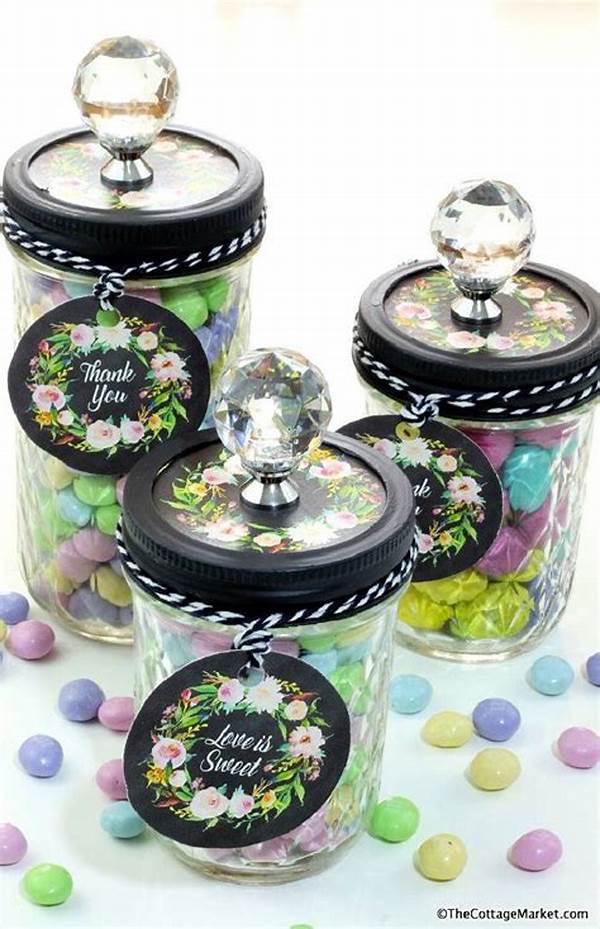Once upon a time, in a bustling corner of Tokyo, there was a small, charming street known for its exquisite culinary offerings. Nestled between towering skyscrapers and neon lights lay a humble eatery, where the art of japanese cuisine aesthetic packing was mastered to perfection. Each box was a canvas, and every culinary creation was a masterpiece, reflecting the heart and soul of Japanese culture.
Read Now : Easy Cooking Tips For Beginners
The Art of Japanese Cuisine Aesthetic Packing
In the heart of Tokyo, there existed a family-owned restaurant that took pride in its traditional yet innovative approach to food presentation. The eldest daughter, Aiko, was the visionary behind their unique style of japanese cuisine aesthetic packing. Her inspiration came from nature, using leaves, flowers, and delicate bamboo baskets to craft stunning presentations. Customers were often mesmerized, not just by the flavors but by the effort and artistry that went into each bento box. Everything, from patterned rice to color-coordinated vegetables, was meticulously arranged to create a visual and flavorful symphony that delighted the senses.
Aiko’s approach to japanese cuisine aesthetic packing involved more than just aesthetics; it was about telling a story. Each meal conveyed a narrative of seasons, landscapes, and traditions. Little rabbits made of radish would romp among green beds of spinach, while cherry blossoms carved from carrots floated across a sea of delicately simmered tofu. To Aiko, each meal was a fleeting work of art meant to be savored, appreciated, and shared. Her patrons often remarked that opening her bento boxes was like unwrapping a carefully curated gift, each layer revealing a new surprise.
Japanese Aesthetic Principles in Food Packaging
1. Aiko’s grandmother taught her the value of ‘ma,’ the Japanese principle of empty space. It was crucial to balance each element in the bento, giving room for the ingredients to breathe and storytelling in japanese cuisine aesthetic packing to unfold naturally.
2. The packaging process mirrored the tradition of ‘Wa,’ or harmony. Ingredients were chosen not solely for taste but also for their ability to harmonize with others, ensuring every bento was a balanced reflection of beauty and flavor in japanese cuisine aesthetic packing.
3. The symmetry and minimalism of ‘Kanso’ were core to Aiko’s method. By maintaining simplicity, the vibrant colors and fresh ingredients could shine, allowing the natural beauty intrinsic to japanese cuisine aesthetic packing to stand out elegantly.
4. A touch of ‘Shibui,’ capturing the understated yet poignant beauty, was always present. A splash of soy sauce or the delicate curve of a lotus root would subtly elevate the aesthetic quality of the packing, making it memorable.
5. Each box was a ‘Haiku,’ composed not with words but with textures and tastes. The poetic interplay of elements encapsulated the soul of japanese cuisine aesthetic packing, transforming each meal into a sensory poem.
Traditional Influences on Japanese Cuisine Aesthetic Packing
Tucked away in a quiet part of Kyoto, a small family restaurant stood as a testament to tradition and the evolution of japanese cuisine aesthetic packing. Grandmother Hiroko, an artisan in her day, handed down her secrets to blending ancient practices with modern needs to her grandchildren. The family believed that the way food was packaged was almost as important as the flavors contained within.
Hiroko shared tales of how, in her youth, she would gather seasonal ingredients at dawn, ensuring that each bento reflected the time of year in its colors and components. The careful crafting of presentation extended to the choice of materials; bamboo leaves, origami papers, and silk threads enhanced each package’s natural appeal. Her stories were just as rich as her dishes, where the aesthetic packing represented an unspoken dialogue between the chef and the eater, an interaction steeped in history and respect.
Innovation Meets Tradition in Japanese Cuisine Aesthetic Packing
1. Young chefs now blend western styles with traditional japanese cuisine aesthetic packing, creating a fusion that respects history while embracing contemporary tastes.
2. Eco-friendly materials are used more frequently, paying homage to nature’s role in japanese cuisine aesthetic packing without compromising aesthetic beauty.
3. Technology, such as 3D printers, is being used to create intricate packaging designs, revolutionizing the efficiency and creativity involved in aesthetic packing.
4. Digital platforms allow chefs to share their packing designs worldwide, showcasing the evolving art of japanese cuisine aesthetic packing.
5. Online workshops teach global audiences the intricate art of japanese cuisine aesthetic packing, spreading this cultural tradition far beyond Japan’s borders.
Read Now : Simple Beginner-friendly Recipes
6. Culinary competitions focus on aesthetic packing, recognizing it as an art form on par with taste, further cementing its importance in culinary traditions.
7. Artistic collaborations invite painters, weavers, and potters to contribute to the aesthetic packing process, enriching each meal’s story with diverse cultural inputs.
8. Seasonal themes continue to dominate, connecting diners with nature and the cycles of life through thoughtful ingredient and color choices in packing.
9. Sustainability remains a focus, with chefs designing packaging that leaves a minimal environmental footprint, resonating with global ecological movements.
10. The incorporation of interactive elements, such as unpacking puzzles, adds an engaging dimension to the dining experience, infusing joy into japanese cuisine aesthetic packing.
The Personal Touch in Japanese Cuisine Aesthetic Packing
A small yet significant revolution was taking shape in a quaint Osaka bistro where owner-chef Haruki poured his heart into every dish. His journey into japanese cuisine aesthetic packing began as a love letter to his childhood, spent in an old fishing village where food was served with a personalized touch. Haruki reminisced about his mother, whose bento boxes were the envy of his friends – lovingly adorned with carefully shaped vegetables and little notes of encouragement tucked inside.
In Haruki’s view, the essence of japanese cuisine aesthetic packing lay in the emotional connection established with each eater. The meticulous attention to detail was not just about beauty; it was an expression of care, an extension of the chef’s intent to nourish both body and spirit. His boxes often contained hidden messages in edible ink, inviting diners to ponder philosophical musings or share in lighter moments.
This intimate approach resonated with patrons, transforming every meal into an experience of anticipation and excitement. Haruki’s commitment to customizing each order based on individual preferences and dietary needs emphasized the adaptability and personal nature of his craft. This resulted in a devoted clientele who appreciated the dedication and thought that went into each uniquely packed meal, proving that while japanese cuisine aesthetic packing could be aesthetically stunning, its true magic lay in the heartfelt story it conveyed with every bite.
Captivating Elements of Japanese Cuisine Aesthetic Packing
In a world that seemed to rush by in a blur, the tranquil ritual of engaging with japanese cuisine aesthetic packing offered a momentary pause. The slow pace at which each element was selected and placed was not just about aesthetics but a mindful appreciation of culinary artistry.
The practice demanded more than skill; it required heart, passion, and an artist’s eye. Each piece of seafood, grain of rice, and slice of daikon was not merely an ingredient but a brushstroke on nature’s canvas. The harmony achieved through thoughtful composition was akin to an orchestral symphony, where each component had its part to play in the larger masterpiece. It was in these simple, everyday acts that the profound beauty of japanese cuisine aesthetic packing truly came to life.
The craftsmanship involved in japanese cuisine aesthetic packing, including the thoughtful layers and the vibrant palette of colors, spoke of a culture deeply rooted in appreciation for beauty and tradition. Those who embraced this art found themselves united in a common purpose: to transform every meal into a celebration of life’s fleeting beauty, a tribute to the untranslatable charm of Japanese culture.




